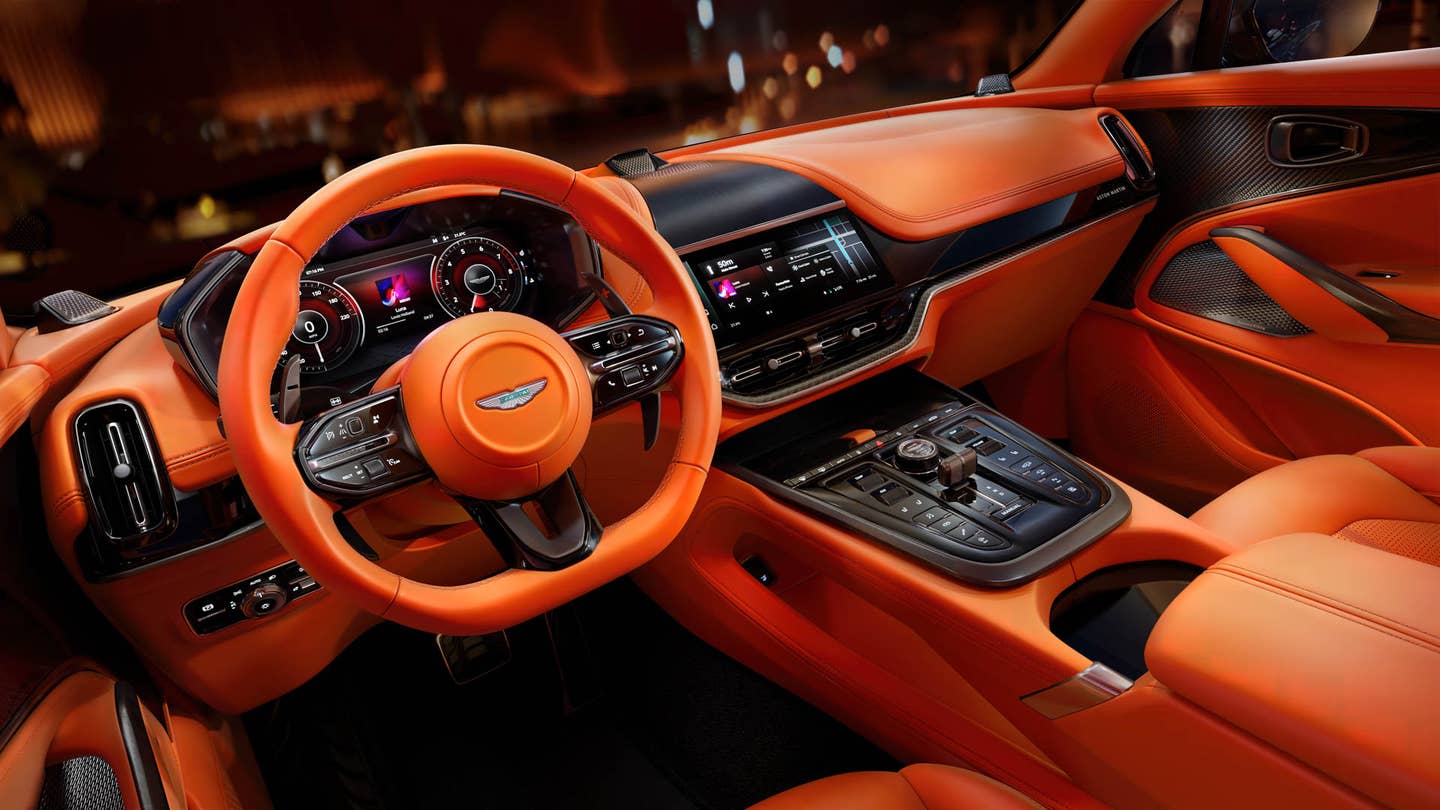The DBX707 borrows the DB12’s interior and it’s so much better now.

It feels a bit silly criticizing the interior of a vehicle as expensive as the Aston Martin DBX. I can’t even afford to insure one, never mind buy one, what do I know about luxury car interiors? However, I never felt that the DBX’s interior had the same wow factor as its exterior. Until now, that is, as Aston Martin drastically updated the DBX707’s cabin and it’s finally as beautiful inside as it is outside.
Previously, the DBX707’s interior was nice to look at and made with sensationally rich materials. However, it never looked up to par with the brand’s prestige: its steering wheel looked kind of generic, its gauges looked a bit low-rent for the segment, and its center stack of radio and climate controls was made from mushy piano-black buttons. Now, though, the DBX707 looks just like the DB12 inside, which is to say that it’s gorgeous.
Its new steering wheel is chunky and sporty like an Aston’s should be (although, the gloss black touch buttons look like fingerprint magnets), the gauge screen is big, crisp, and features high-res graphics, and the center console now has more physical knobs, buttons, and switches. Aston Martin’s design director recently said that the brand’s metric for designing interiors is called the “piss-off factor,” making sure none of its controls piss the team off, and it looks like it’s working.
Aston Martin also replaced the aging Mercedes-sourced infotainment system with its own in-house setup, which proved to be a massive upgrade in the DB12 Volante. The screen itself is barely any bigger, at 10.25 inches, but the system behind it is entirely different and that’s what matters most. That said, the digital gauge screen is 1.5 inches bigger, now at 12.3 inches. Apple CarPlay and Android Auto are now wireless, after being wired-only when the infotainment system first launched in the DB12.
While the exterior is mostly unchanged—it was near-perfect already—Aston did make a few tweaks. For example, the door handles now power-present when unlocked and the side mirrors have a new flush-glass design. Interestingly, the new mirrors move differently, too. On almost all cars, only the glass mirror moves inside its housing when adjusted by the driver but, on the new DBX707, the entire mirror housing moves. According to Aston, the reason for these new mirrors is to provide more reflective surface area and to better house cameras for the surround-view parking system. There are a few new paint colors, too, most of which are green: Helios Yellow, Epsilon Black, Malachite Green, Aura Green, Sprint Green, and, if you get the DBX707 AMR23 Edition, Podium Green.
Mechanically, the Aston Martin DBX707 recipe remains unchanged. It still packs a 4.0-liter twin-turbo V8 with 697 horsepower (707PS, which is where the name comes from) and 663 lb-ft of torque. A nine-speed wet-clutch auto still handles gear shifts and power still goes to all four wheels, so its 0-60 mph sprint still takes just 3.1 seconds.
The Aston Martin DBX707 has always been a stunning, shockingly fast, and incredibly impressive SUV. Its interior just never quite matched the beauty of its exterior. Now it does. And if you’re rich enough to own a DBX707 to trade in and want this new interior, you can do so when deliveries begin in Q2 of 2024.
Got tips? Send ’em to tips@thedrive.com


